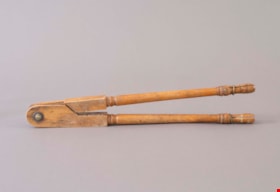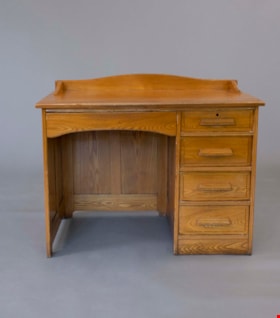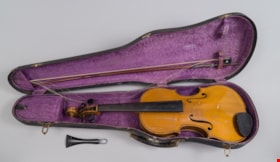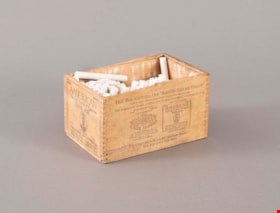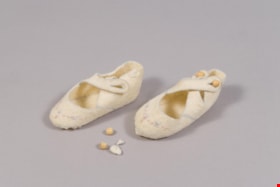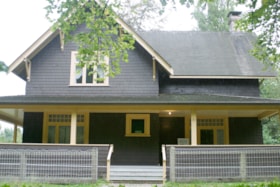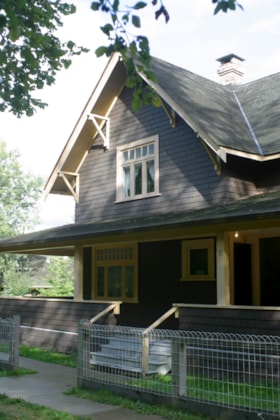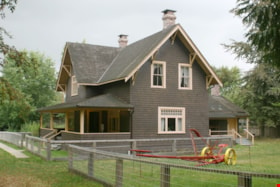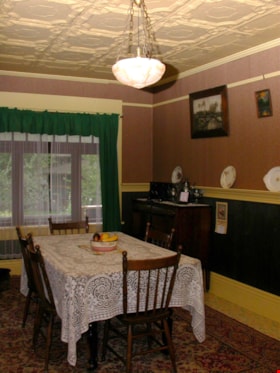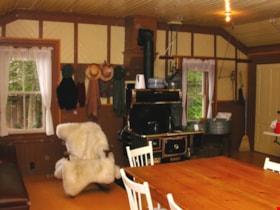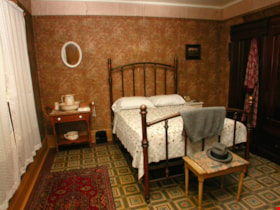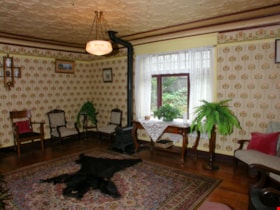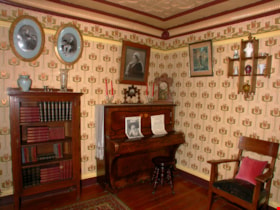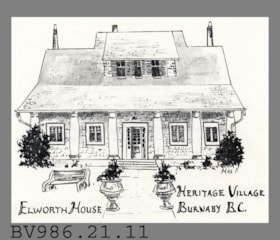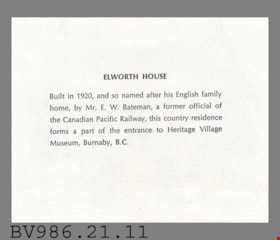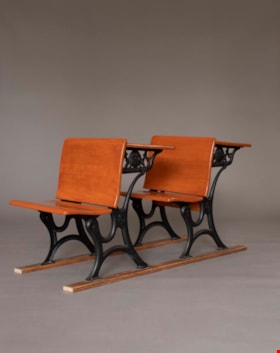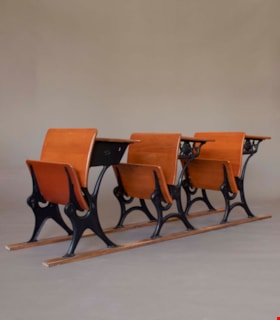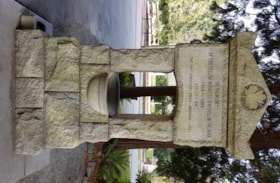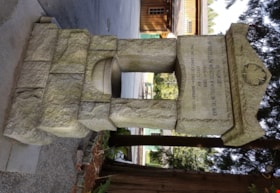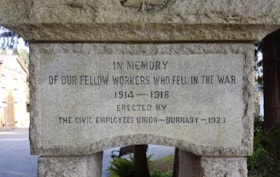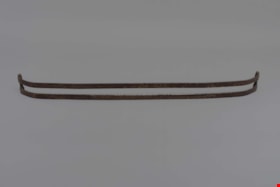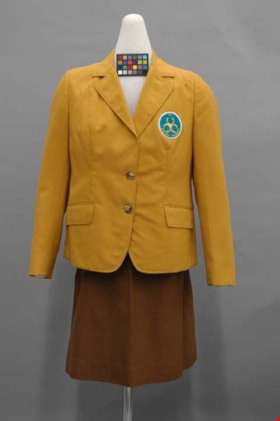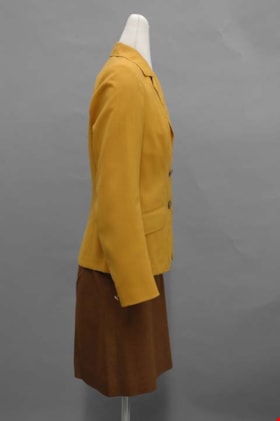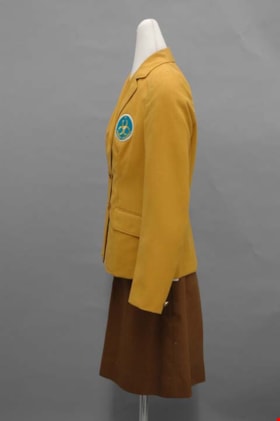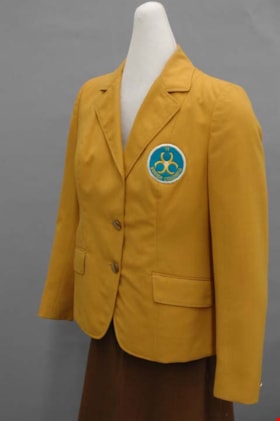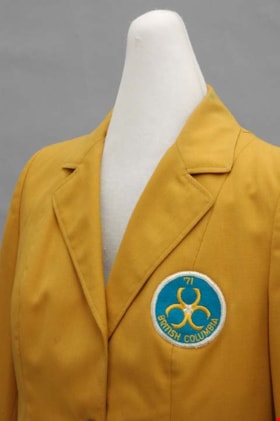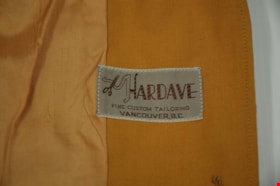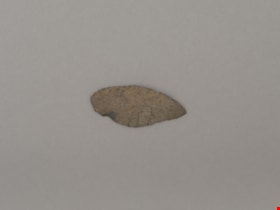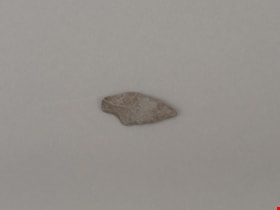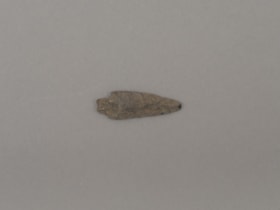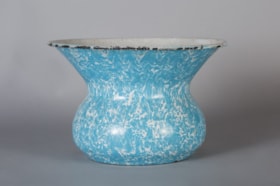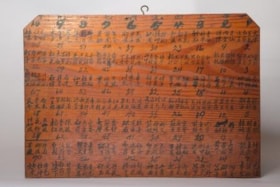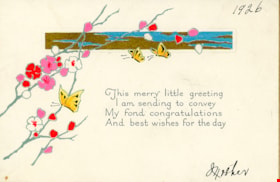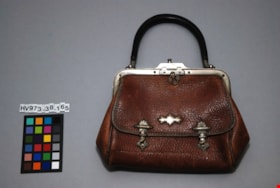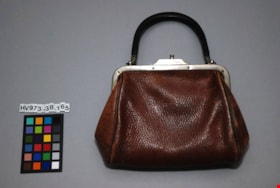Narrow Results By
Decade
- 2020s 153
- 2010s 211
- 2000s 241
- 1990s 653
- 1980s 612
- 1970s 1011
- 1960s 313
- 1950s 393
- 1940s 580
- 1930s 547
- 1920s 486
- 1910s 488
- 1900s 407
- 1890s 118
- 1880s 26
- 1870s 14
- 1860s 12
- 1850s 5
- 1840s 3
- 1830s 3
- 1820s 3
- 1810s 3
- 1800s 3
- 1790s 3
- 1780s 3
- 1770s 3
- 1760s 3
- 1750s 3
- 1740s 3
- 1730s 3
- 1720s 3
- 1710s 3
- 1700s 3
- 1690s 3
- 1680s 3
- 1670s 3
- 1660s 3
- 1650s 3
- 1640s 3
- 1630s 3
- 1620s 3
- 1610s 3
- 1600s 3
- 1520s 1
Subject
- Accidents 3
- Accidents - Automobile Accidents 5
- Accidents - Train Accidents 7
- Adornment - Jewelry 4
- Advertising Medium 12
- Advertising Medium - Business Cards 4
- Advertising Medium - Flyer 13
- Advertising Medium - Poster 2
- Advertising Medium - Signs and Signboards 62
- Aerial Photographs 4
- Agricultural Tools and Equipment 6
- Agricultural Tools and Equipment - Gardening Equipment 1
Community Archives Collection series
https://search.heritageburnaby.ca/link/archivedescription97126
- Repository
- City of Burnaby Archives
- Date
- [188-]-2010
- Collection/Fonds
- Burnaby Historical Society fonds
- Description Level
- Series
- Physical Description
- Textual records and other materials
- Scope and Content
- Series consists of the Burnaby Historical Society's Community Archives collection. The Society's collection includes photographs, documents, ephemera, oral histories, and other records from a myriad of sources and donors, compiled to document the history of Burnaby.
- Repository
- City of Burnaby Archives
- Date
- [188-]-2010
- Collection/Fonds
- Burnaby Historical Society fonds
- Physical Description
- Textual records and other materials
- Description Level
- Series
- Scope and Content
- Series consists of the Burnaby Historical Society's Community Archives collection. The Society's collection includes photographs, documents, ephemera, oral histories, and other records from a myriad of sources and donors, compiled to document the history of Burnaby.
- History
- The Burnaby Historical was founded in 1957. The Historical Society developed its Community Archives by collecting, compiling, and preserving records with historic value to the City of Burnaby. It gathered documents, photographs, and other items while also soliciting and acquiring entire collections or groups of archival records. In 1991, the Society was provided a permanent space to house their growing collection at the Burnaby Village Museum and they continued to grow their holdings. Following the creation of the City of Burnaby Archives in 2001, the Society and the City of Burnaby began discussing the possibility of uniting the two collections. In February 2007, an agreement was signed between the two institutions which resulted in the merger of the Society's Community Archives with the City Archives. All records collected by the Society were transferred into the custody of the City and moved from the Burnaby Village Museum to the City Archives in the McGill branch of the Burnaby Public Library.
- Notes
- Title based on contents of series
blackboard compasses
https://search.heritageburnaby.ca/link/museumartifact1167
- Repository
- Burnaby Village Museum
- Accession Code
- HV971.26.2
- Description
- Blackboard compasses, large, wooden.
- Object History
- This item is on display at the Seaforth School in the Burnaby Village Museum.
- Classification
- Drafting T&E
- Object Term
- Compass
Images
teacher desk
https://search.heritageburnaby.ca/link/museumartifact1209
- Repository
- Burnaby Village Museum
- Accession Code
- HV971.29.25
- Description
- Oak desk, 5 drawers, light colored wood, dove tailed joints
- Object History
- This item is on display at the Seaforth School in the Burnaby Village Museum. The desk was from the Burnaby School Board and assumed to have been used in a Burnaby school.
- Category
- 02. Furnishings
- Classification
- Storage & Display Furniture
- Object Term
- Desk
Images
violin
https://search.heritageburnaby.ca/link/museumartifact2235
- Repository
- Burnaby Village Museum
- Accession Code
- BV990.3.1
- Description
- John Leonard's violin. Label inside reads: "Copy of Antonius Stradivarius"; made in Germany, "Imperial Violin" stamped on back behind scroll; with bow; and with case, black, which has purple felt lining
- Object History
- This violin was used by George Leonard, Martha (Leonard) Love's father. It was passed down to his grandson John Leonard Love who played it in the parlour of the Love Farmhouse at Burnaby Village Museum.
- Subjects
- Musical Instruments
- Names
- Love, John Leonard
Images
chalk box
https://search.heritageburnaby.ca/link/museumartifact2408
- Repository
- Burnaby Village Museum
- Accession Code
- HV971.148.2
- Description
- Wooden chalk box; dovetail joints; lid is missing (sliding type); "One Gross AMERICAN The `Old Faithful' Crayons STERLING WHITE", "The American Crayon Co. Waltham Mass. Sandusky Ohio Established 1835 Made in U.S.A"; picture of Old Faithful; "This Box Contains..."
- Object History
- This item is on display at the Seaforth School in the Burnaby Village Museum.
- Classification
- Written Communication T&E - - Writing Devices
- Object Term
- Chalk
- Country Made
- United States of America
Images
baby shoes
https://search.heritageburnaby.ca/link/museumartifact3273
- Repository
- Burnaby Village Museum
- Accession Code
- BV989.30.9
- Description
- Pair of felt baby booties, white wool with embroidered flowers in pink, outlined in blue; ankle strap and button.
- Object History
- Baby shoes worn by Don Copan, who later worked in Burnaby as an educator, including serving as the Principal of Twelfth Avenue Elementary School. He served on the 1958 and 1971 Centennial Committees, and was the founding President of the Century Park Museum Association - which later became Burnaby Village Museum.
Images
building
https://search.heritageburnaby.ca/link/museumartifact3846
- Repository
- Burnaby Village Museum
- Accession Code
- BV988.33.1
- Description
- The core of the Jessie Love farm house is a 1893 two story, pioneer tent style building. The home was added to over the years and became a large Craftsmen style farm house.
- Object History
- Built on Cumberland Road in Burnaby in 1893. Music Room/Parlour/Living Room and bedrooms above added c.1898. Kitchen added c.1908. The home of Jesse and Martha Love and their eleven children. One of Burnaby's oldest structures. The home was moved to Burnaby Village Museum in the late 1980s and has been partially restored to its 1920s appearance.
- Category
- 01. Built Environment Objects
- Classification
- Structures - - Dwellings
- Object Term
- House
- Colour
- Brown
- Culture
- Canadian
- Geographic Access
- Cumberland Street
- Street Address
- 6501 Deer Lake Avenue
- Historic Neighbourhood
- East Burnaby (Historic Neighbourhood)
- Planning Study Area
- Cariboo-Armstrong Area
Images
postcard
https://search.heritageburnaby.ca/link/museumartifact5636
- Repository
- Burnaby Village Museum
- Accession Code
- BV986.21.11
- Description
- Elworth House - Postcard - [197-?]. Advertising or souvenir card produced by Heritage Village Museum (Burnaby Village Museum) to promote Elworth House. The front of the card has an illustration by Max F of Elworth House. The back of the card gives a short description of Elworth House and its owner, Edwin Bateman.
- Classification
- Written Communication T&E - - Writing Media
- Object Term
- Postcard
- Geographic Access
- Deer Lake Avenue
- Street Address
- 6501 Deer Lake Avenue
- Historic Neighbourhood
- Burnaby Lake (Historic Neighbourhood)
- Planning Study Area
- Morley-Buckingham Area
Images
school desk
https://search.heritageburnaby.ca/link/museumartifact7082
- Repository
- Burnaby Village Museum
- Accession Code
- BV985.396.6
- Description
- School desk, Globe brand; Waterloo, Ontario; #3, open scrollwork sides
- Object History
- This item is on display at the Seaforth School in the Burnaby Village Museum. The desk was from the Burnaby School District.
- Reference
- BV985.396.6 and BV985.396.7 are imaged together.
- Category
- 02. Furnishings
- Classification
- Storage & Display Furniture
- Object Term
- Desk
- Maker
- Globe
Images
school desk
https://search.heritageburnaby.ca/link/museumartifact7084
- Repository
- Burnaby Village Museum
- Accession Code
- BV985.396.8
- Description
- School desk, Globe brand; #3
- Object History
- This item is on display at the Seaforth School in the Burnaby Village Museum. The desk was from the Burnaby School District.
- Reference
- BV985.396.8, BV985.396.9, BV986.83.13 are imaged together
- Category
- 02. Furnishings
- Classification
- Storage & Display Furniture
- Object Term
- Desk
- Maker
- Globe
Images
memorial drinking fountain
https://search.heritageburnaby.ca/link/museumartifact8784
- Repository
- Burnaby Village Museum
- Accession Code
- BV985.1242.1
- Description
- The Memorial fountain is made of British Columbia granite. The fountain is currently three courses of rough stone, leading up to the smooth water bowl. Two side pillars carry the memorial stone and the peaked cap stone at the top. The memorial stone's face is smooth, to present the cut text of the memorial. There is a maple leaf cut into the face of the cap stone. The text and the maple leaf are highlighted with black paint. There is a small block at the rear of the fountain to allow children easy access and there is a smooth stone drinking bowl for animals at the proper right of the base of the fountain. The fountain on its original site was four courses high. In its current site the bottom course is set level with the ground. The main bowl is supplied with running water but the animal bowl is dry.
- Object History
- The fountain was erected by the Burnaby Civic Employees Union (now CUPE Local 23) and is dedicated to Union members who died in the Great War. Local stonemason, William Williamson, constructed the fountain in 1923 and it was unveiled on June 17, 1923. In 1977, the fountain was moved and rededicated from the old Burnaby Municipal Hall site to its current site at Burnaby Village Museum. On November 23, 1992, the fountain was given official Heritage Designation by Bylaw # 9807, Municipality of Burnaby
- Marks/Labels
- "IN MEMEORY / OF OUR FELLOW WORKERS WHO FELL IN THE WAR / 1914 - 1918 / ERECTED BY / THE CIVIC EMPLOYEES UNION - BURNABY - 1923", cut into the smoothed face of the memorial stone on the fountain. There is a maple leaf cut into the face of the cap stone on the top of the fountain. The maple leaf motif is also used on veteran grave stones.
- Maker
- William Williamson
- Country Made
- Canada
- Province Made
- British Columbia
- Site/City Made
- Burnaby
- Subjects
- Fountains
- Wars
- Monuments - War Memorials
- Wars - World War, 1914-1918
- Organizations - Unions
- Names
- Williamson, William
Images
Bumper
https://search.heritageburnaby.ca/link/museumartifact9714
- Repository
- Burnaby Village Museum
- Accession Code
- BV985.2075.1
- Description
- Chevy bumper for automobile, rusted.
- Object History
- Bumper of this type was sold at Wagner's shop in his fleet of bumpers but was not the style he patented. This item can be seen in the blacksmith's shop at Burnaby Village Museum.
- Subjects
- Transportation - Automobiles
- Names
- Wagner, Frank
- Historic Neighbourhood
- Central Park (Historic Neighbourhood)
- Planning Study Area
- Maywood Area
Images
uniform
https://search.heritageburnaby.ca/link/museumartifact11638
- Repository
- Burnaby Village Museum
- Accession Code
- BV985.3526.1
- Description
- Uniform; women's jacket and skirt. Jacket in yellow, adorned with a B.C. Centennial badge with the offical emblem of a stylized grouping of the three "C's" representing Canada, Confederation, Centennial, with the provincial floral emblem, the dogwood, in the centre; two plastic buttons in tortoise shell design as centre fasteners; jacket style with lapels and two waist level pockets. Straight style short skirt in brown fabric.
- Object History
- The jacket and skirt were issued to female members of Burnaby's 1971 Centennial Committee. It is believed that these pieces belonged to Mary D. Trainer, who was the Centennial Co-ordinator hired to help organize a variety of community events to commemorate the 100th anniversary of British Columbia's entry into Confederation. Burnaby's Centennial Committee was chaired by Mr. James Barrington. The committee organized a variety of community events, including the construction of a Heritage Village (now Burnaby Village Museum). Mrs. Trainer altered her skirt to be shorter than the standard issue skirt: shorter skirts were a more fashionable look for a young woman at the time.
- Category
- 08. Communication Artifacts
- Classification
- Personal Symbols - - Status Symbols
- Object Term
- Uniform
Images
projectile point
https://search.heritageburnaby.ca/link/museumartifact19193
- Repository
- Burnaby Village Museum
- Accession Code
- BV002.57.6
- Description
- Projectile point, stone; rounded end. Bifacially flaked – stone removed on both sides of the point; basalt and lead shaped
- Object History
- The donor inherited this artifact from his mother, Katherine Maude (Kitty) Peers, who inherited them from her father, Louis Claude Hill. The artifacts were found on his farm, Brookfield Farm, at Douglas Road and Sperling Avenue (now site of Burnaby Village Museum).
- Culture Phase: Possibly Locarno Beach phase (3520 -2200 Before Present)
- Historic Neighbourhood
- Burnaby Lake (Historic Neighbourhood)
Images
Documents
projectile point
https://search.heritageburnaby.ca/link/museumartifact19194
- Repository
- Burnaby Village Museum
- Accession Code
- BV002.57.7
- Description
- Projectile point, stone; indented on one side. Triangular stemmed projectile point
- Object History
- The donor inherited this artifact from his mother, Katherine Maude (Kitty) Peers, who inherited them from her father, Louis Claude Hill. The artifacts were found on his farm, Brookfield Farm, at Douglas Road and Sperling Avenue (now site of Burnaby Village Museum).
- Culture Phase: Possibly Locarno Beach phase (3520 -2200 Before Present)
- Geographic Access
- Deer Lake Avenue
- Historic Neighbourhood
- Burnaby Lake (Historic Neighbourhood)
- Planning Study Area
- Burnaby Lake Area
Images
Documents
projectile point
https://search.heritageburnaby.ca/link/museumartifact19195
- Repository
- Burnaby Village Museum
- Accession Code
- BV002.57.8
- Description
- Projectile point, stone. Lancelot, parallel stemmed – stem has straight sides (squared off appearance).
- Object History
- The donor inherited this artifact from his mother, Katherine Maude (Kitty) Peers, who inherited them from her father, Louis Claude Hill. The artifacts were found on his farm, Brookfield Farm, at Douglas Road and Sperling Avenue (now site of Burnaby Village Museum).
- Longer points like this were used on spears; sometimes in combination with a tool called an atl atl (spear thrower).
- Culture Phase: Possibly Locarno Beach phase (3520 -2200 Before Present)
- Historic Neighbourhood
- Burnaby Lake (Historic Neighbourhood)
Images
Documents
spittoon
https://search.heritageburnaby.ca/link/museumartifact23694
- Repository
- Burnaby Village Museum
- Accession Code
- HV975.5.34
- Description
- Spittoon or cuspidor. Blue enamel with white interior. Enamel is worn around the top opening.
- Object History
- This item originates from the Chinese Herbalist Store "Way Sang Yuen Wat Kee & Co.", Victoria B.C. which is now housed at Burnaby Village Museum. After China became a Communist state in 1949, the spittoon became much more prevalent: spittoons were placed at every conceivable public place, and were commonplace in homes as well. The mass introduction of spittoons was no doubt a public hygiene initiative, motivated by a desire to curtail the once common Chinese practice of spitting onto the floor. The spittoons used in China were typically made of white porcelain, sometimes with traditional Chinese art painted onto the exterior. The fact that there was a spittoon as part of the Way Sang Yuen Wat Kee & Co. Herbalist shop when they closed in the 1970s, may reflect that the practice of the people in 1970s Victoria was similar to those in China.
- Classification
- Chemical T&E
- Measurements
- 15 cm height x 18 cm width x 18 cm length
Images
plaque
https://search.heritageburnaby.ca/link/museumartifact24511
- Repository
- Burnaby Village Museum
- Accession Code
- HV975.5.1006
- Description
- Red-stained wood rectangular signage plaque with hook for hanging in the middle of the top edge. Chinese characters and the numbers 1-70 are black-inked vertically from the top right corner to bottom left corner.
- Object History
- This item originates from the Chinese Herbalist Store “Way Sang Yuen Wat Kee & Co.”, Victoria B.C. Plaque is the legend for the arrangement of apothecary drawers (HV975.5.2) used in at Way Sang Yuen Wat Kee & Co. and currently on display in the Burnaby Village Museum exhibit. Each drawer has Chinese words on the side and sequence of drawers was arranged according to The Thousand-Character Writing (QianZiWen). The Thousand-Character Text, is a Chinese poem that has been used as a primer for teaching Chinese characters to children from the sixth century onward. It contains exactly one thousand characters, each used only once, arranged into 250 lines of four characters apiece and grouped into four line rhyming stanzas to make it easy to memorize. It is sung in a way similar to children learning the Latin alphabet singing an "alphabet song." Along with the Three Character Classic and the Hundred Family Surnames, it formed the basis of literacy training in traditional China. There are some rules for allocating Chinese medicinal material into the apothecary drawers. Chinese medicinal materials are assigned into different drawers based on their scent and property in general. Usually Chinese medicinal material with similar property would be put together (in the same drawer or nearby). Processed Chinese medicinal materials are separated from minerals. The staff responsible for preparing the medicine for the patient should remember the location, content and the effect of the Chinese medicinal materials in order to have their work done efficiently.
- Classification
- Written Communication T&E
- Measurements
- 30 cm height x 45 cm width
Images
greeting card
https://search.heritageburnaby.ca/link/museumartifact27258
- Repository
- Burnaby Village Museum
- Accession Code
- HV974.90.2
- Description
- greeting card; Congratulations and Best Wishes -- 1926. The card is white with silver branches at left, with red, pink and white blossoms, gold and blue bar across top, yellow and black butterflies. There is a short verse "This merry little greeting...". Written in ink on the top right corner is "1926". Signature in black ink in lower right corner reads: "Mother".
- Object History
- Card received by Edna Caroline Corner (nee Bateman) from her mother, Mrs. E.W. Bateman, likely on the occasson of her daughter, Catherine Levins' birth. Item donated by Cathy Levins, grand-daughter of Elwin W. Bateman. Elwin W. Bateman and his second wife, Mary (Dale) Bateman moved into a landmark home built in the Deer Lake Crescent subdivision of Burnaby in 1922. The home is now a heritage landmark in Burnaby, and is located at the Burnaby Village Museum.
- Category
- 08. Communication Artifacts
- Classification
- Documentary Artifacts - - Other Documents
- Object Term
- Correspondence
Images
purse
https://search.heritageburnaby.ca/link/museumartifact28867
- Repository
- Burnaby Village Museum
- Accession Code
- HV973.38.165
- Description
- Purse, brown leather; silver metal frame; short black rigid leather handle; outside flap fastens with metal clasps.
- Object History
- Florena (or Floriana) Bird was born in Toronto in 1882 to Joseph Bird and Alice Pill. She married Orval Elsworth Butler, a cabinet maker and carpenter in 1928. She worked as a clerk until her marriage at age 44. The couple moved to Burnaby in the 1930s. Orval died at age 79 in 1941. Florena died in 1973 at age 90. The Orval Butler and his first wife, Catherine, likely built the house at 8006 Government Rd. Catherine (spelling unknown) died and left Orval a widower before his marriage to Florena. Florena later lived in the house. The contents of the house were donated to the Burnaby Village Museum upon her death as part of her estate.
- Subjects
- Personal Gear - Purses
- Personal Gear
